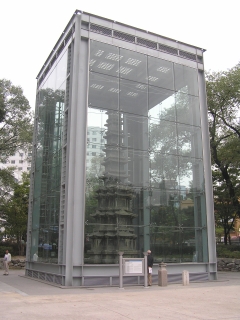Seoul, South Korea XII
 The aquarium at COAX was incredible. Huge cylindrical tanks were built and filled with various species of fish. Never more than one or two meters across, they provided excellent access to the fish. Later portions of the exihibit featured more natural surroundings.
The aquarium at COAX was incredible. Huge cylindrical tanks were built and filled with various species of fish. Never more than one or two meters across, they provided excellent access to the fish. Later portions of the exihibit featured more natural surroundings.Are exotic tropical fish not bothered by their bare surroundings? Why are non-tropical fish always stored in tanks more like their natural habitats?
This picture is from the tank of piranhas. Strangely, the fish floated without moving. Down the hall, I saw a group of young sharks in a nursery being fed churn. The tank spun with activity as they rushed to feed. I captured the frenzy in a short film, but I need to find a way to share short videos on this blog. (Suggestions: YouTube.com?)












